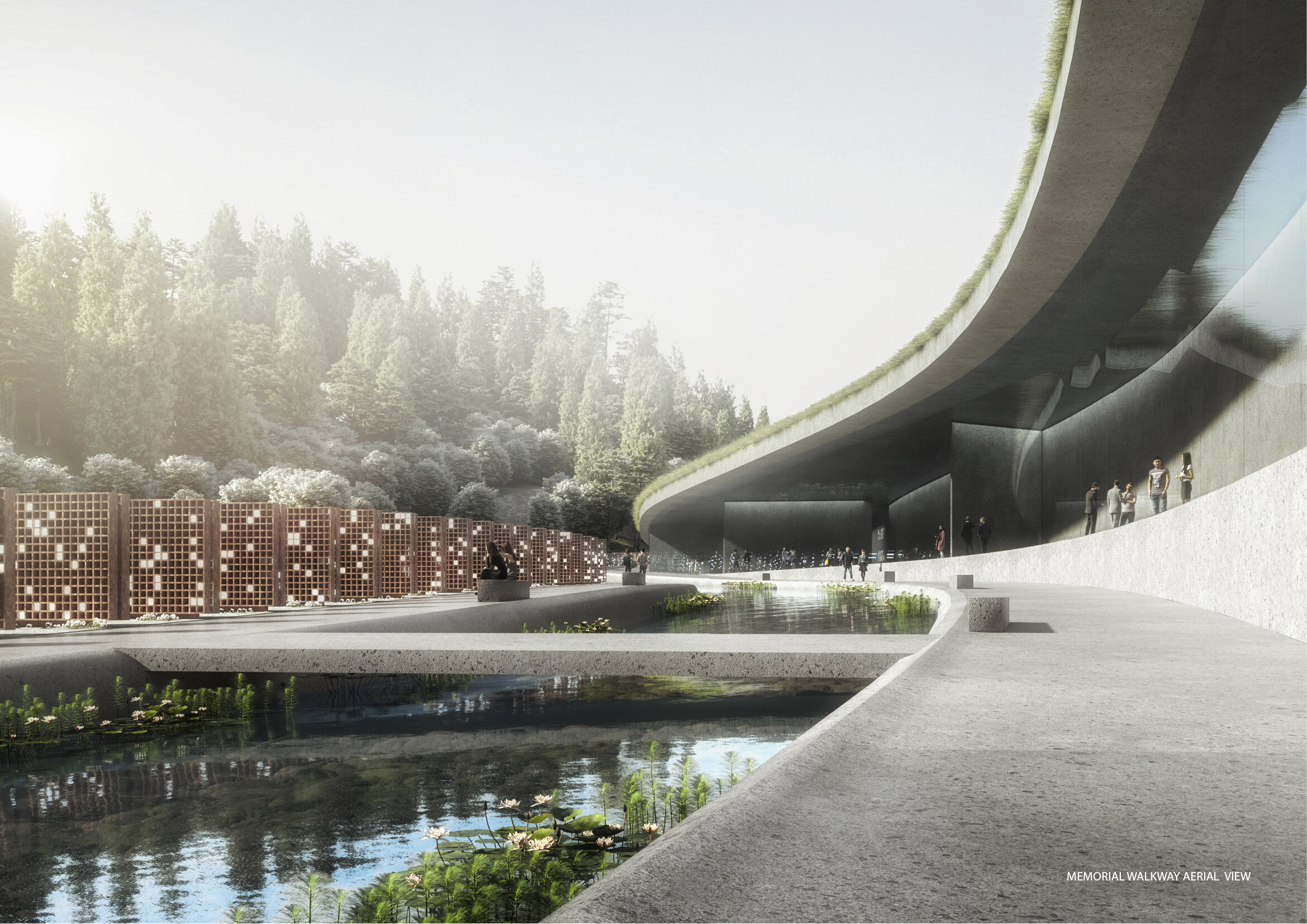
Korean War Memorial Park for Civil Victims


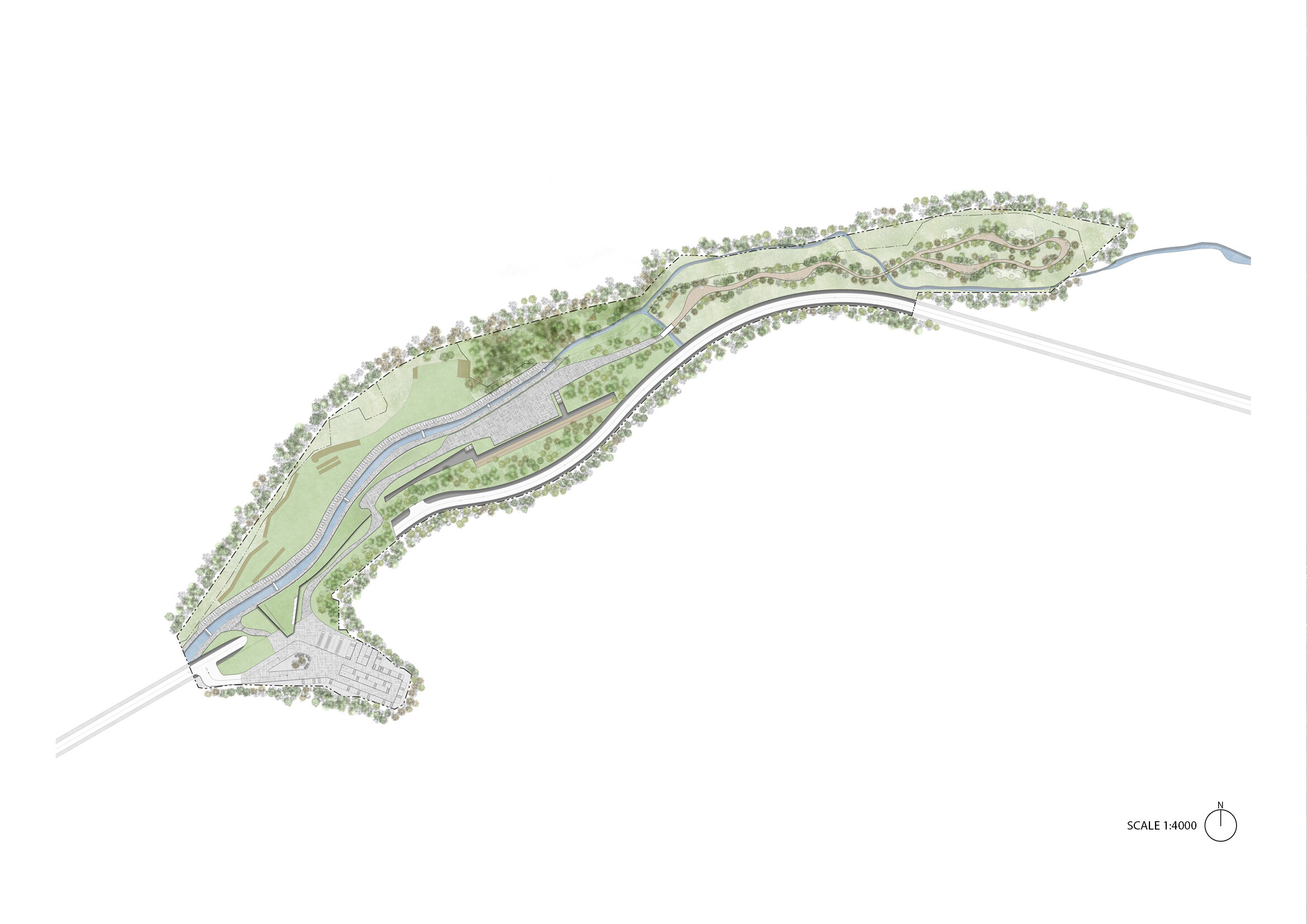

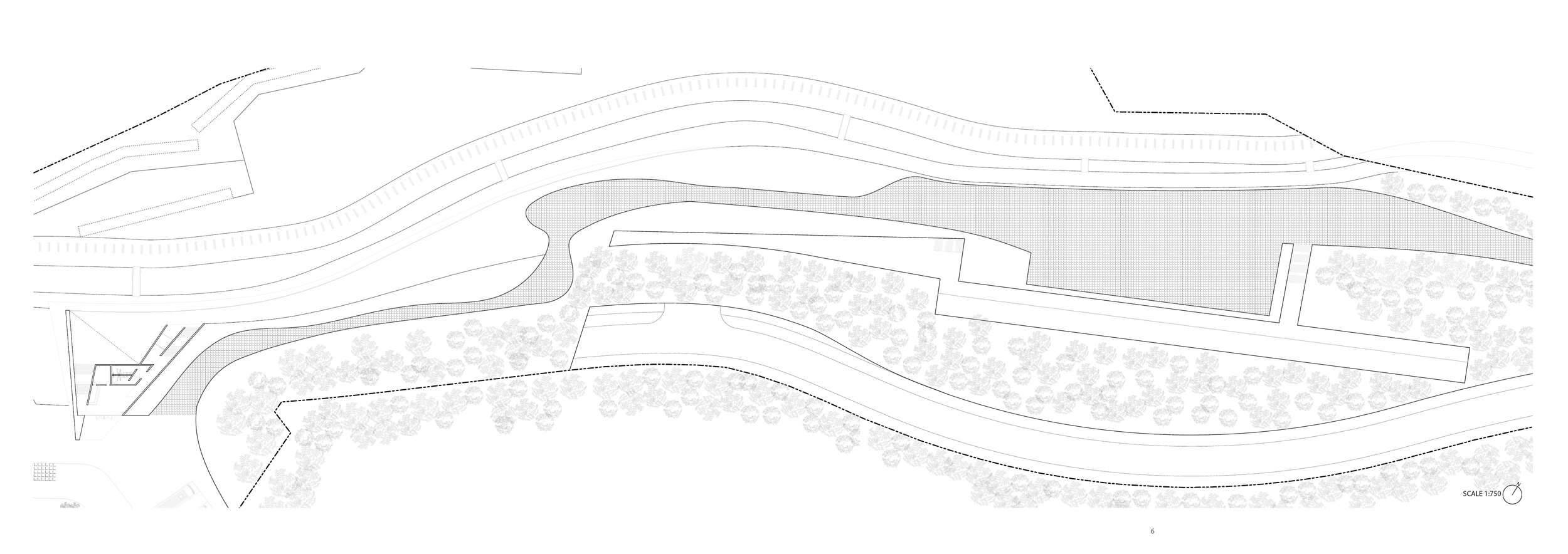


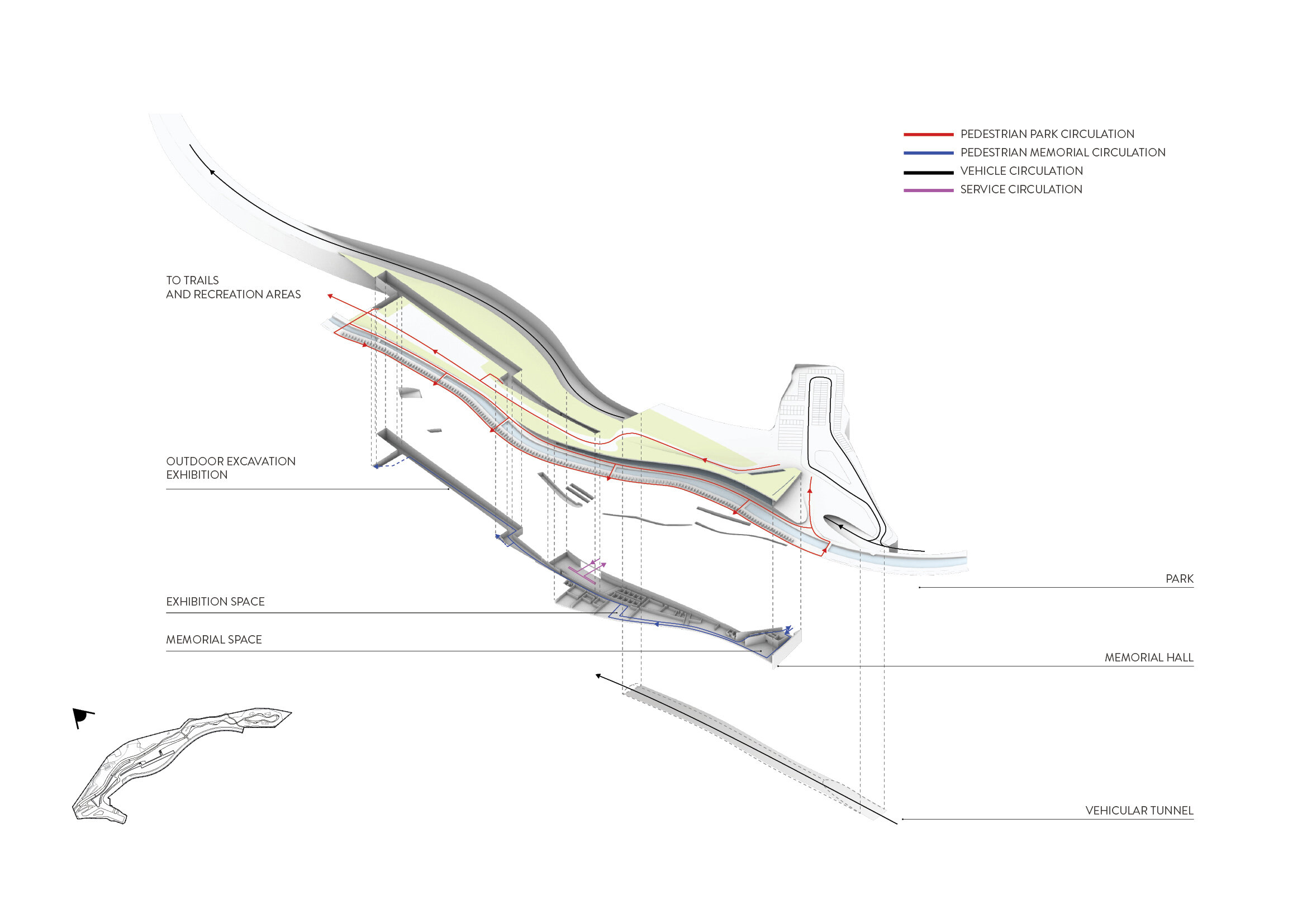

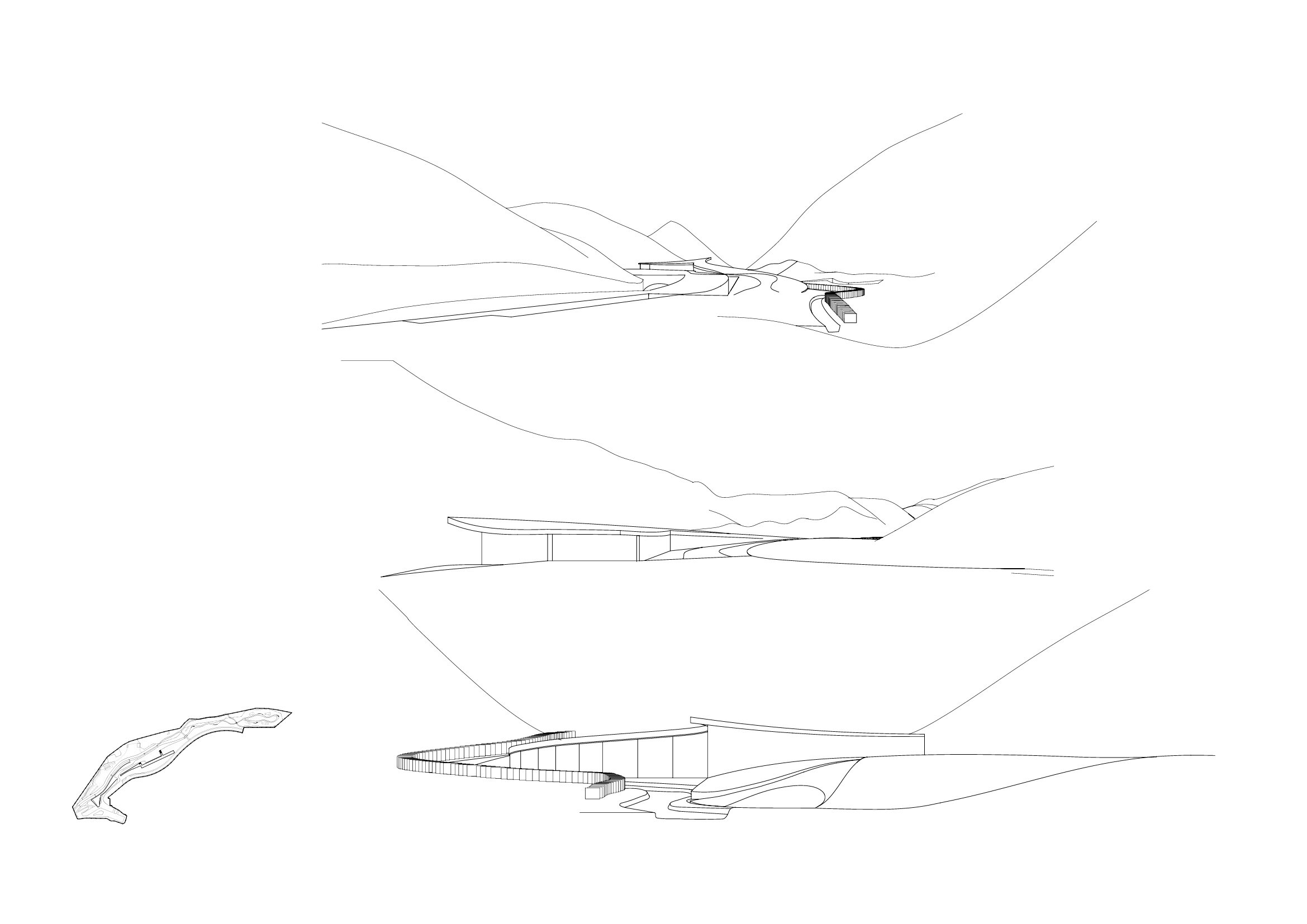



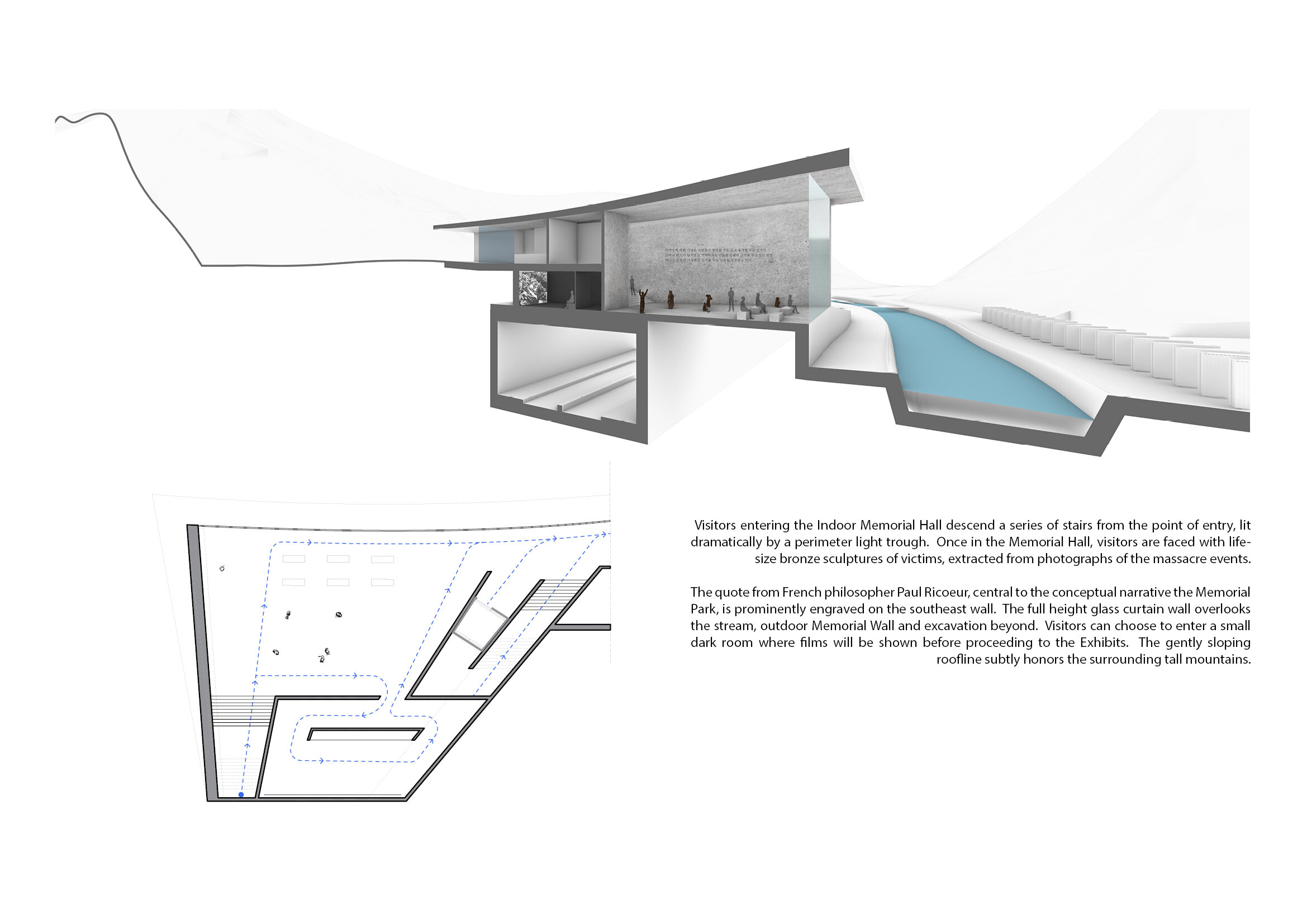



Our concept for the Korean War Memorial Park for Civil Victims commemorates the civil victims of the Korean War, reflecting the depth of the suffering of the families of the lost civilians while embracing the natural, healing beauty embodied in the site. The stream serves as the central organizing spine for the Memorial Park, activating a narrative of faithfulness by progressing through the past we remember, the present we forget, and a future in which we forgive.
The entry of the Memorial Park is strategically situated in the southwest corner of the site, closest to the city so that it can be accessed by pedestrians and free of parking and heavy traffic. The future road is lowered and tunneled under the main entry of the Memorial to create a pedestrian-friendly experience and vehicle-free access to the Memorial. Visitors entering the Memorial Hall descend a series of stairs and encounter a full height glass wall that overlooks the stream, outdoor Memorial Wall and excavation beyond. Circulation between the exhibits occurs along the central spine, providing continued interaction with the stream and opposing Enshrinement Pillars. The indoor and outdoor paths converge on an outdoor gathering space before progressing towards trails and recreational space where the visitor absorbs the painfulness of past traumas, reflects upon how to cope with the present, and moves towards the promise of future forgiveness. Along the northern boundary of the stream runs a series of Enshrinement Pillars. Each Pillar represents one of the 668 massacre cases that took place across Korea during the Civil War and are identified by location. The Memorial Wall continues along the stream as it moves northeast along the site.
The overall concept for the Korean War Memorial Park integrates the building and outdoor memorial into the natural landscape of the site, acknowledging the spiritual connection between healing and the natural environment.
